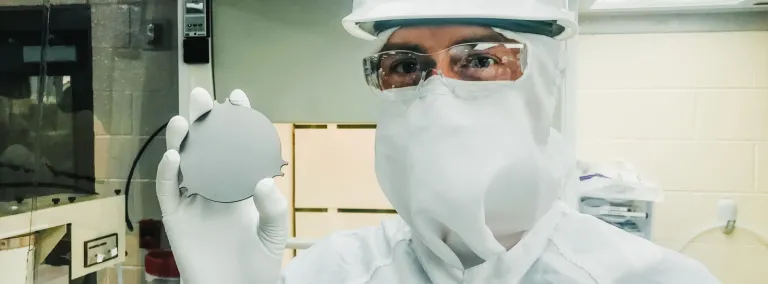
Present
Tantalum-180
What is Tantalum?
Tantalum is a chemical element, a rare, hard, blue-gray, lustrous transition metal that is highly corrosion-resistant. It has multiple isotopes: two stable and 35 artificial radioisotopes. The least stable of those isotopes is tantalum-180. For decades, physicists have sought to observe and measure the decay of tantalum-180m, nature’s rarest isotope. However, tantalum-180m is trapped in a metastable state, bound by a strange, un-intuitive quirk of physics. While theory states that the isotope must eventually decay, that decay has never been observed.

17.4
Kilograms of tantalum in the experiment.

How Does the Experiment Work?
In the atomic world, particles are constantly seeking equilibrium; yet that equilibrium is rarely attained and quickly disrupted.
One case of atomic disruption is when a nucleon—either a proton or neutron in the center of an atom—receives a burst of energy and leaps to a higher, unstable energy level. To regain stasis, the nucleon will immediately decay, falling back to its lower energy level and releasing the excess energy in the form of a gamma ray.
But sometimes, the nucleon gets stuck and remains full of unreleased energy. These “stuck” nucleons are held in place by a strange law of physics called “spin-suppression”; isotopes with spin-suppressed nucleons are called “metastable isomers.” Some take several seconds to decay. Others can take years.
All metastable isomers do eventually escape their spin-suppressed state. And all metastable isomer decays have been observed in a lab—all except one. This spin-suppressed state keeps tantalum-180m in its bewildering state for a long time. Theory predicts that the half-life of tantalum-180m is between 1017 and 1018years, far longer than the universe itself has existed.
That means it may never be seen. And that's where the Majorana Demonstrator experiment comes in. Built to demonstrate technology in the search for a theorized decay the experiment was built with ultra-pure materials, then placed it within layers of shielding in a cleanroom 4,850 feet underground at SURF, making it the perfect place to search for tantalum-180 decay.
As the Majorana Demonstrator’s science run drew to a close, the detector was repurposed. Researchers placed 17.4 kilograms of tantalum (containing about 2.088 grams of tantalum-180m) inside the detector, where a large array of 23 high-purity germanium detectors will detect minute signals.
If all goes to plan, the experiment will finally witness a decay of tantalum-180m. Beyond settling a decades-old search, a better understanding of the decay process could be exploited to search for dark matter.

